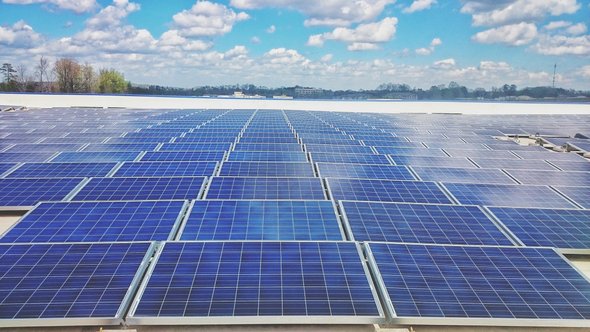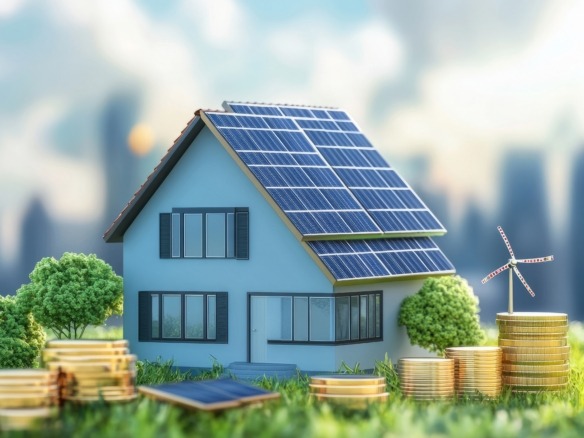Did you know that within a 24 hour period the Sun is able to generate more energy than the entire population would consume in 27 years?

Solar power can provide an unlimited source of energy, with the sun producing enough to power everything on Earth, cleanly and without damaging the planet. By transforming this continuous energy into electricity, solar panels need no fuel, and don’t release any harmful emissions into the atmosphere. Solar energy is good for the consumer, and good for the environment – a win-win situation.
Buying solar panels for your home, however, can seem like a minefield. Do you choose Monocrystalline, Polycrystalline or String Ribbon Solar Panels, or any other the others out there? Which are easier to fit or provide the best return on your money?

Luckily, The Gadget Nerds have produced a very useful Solar panel review guide to cut through the jungle of confusing information, including details of the main panel types and reviews of the best-selling models. However, we have a couple of extra tips for buying and installing your solar panels.
Always ask the right questions:
Before considering installing the panels, there are some important points you need to think about:
How old is your property?
Can it support solar panels?
How much space do you have available?
How much energy do you need to produce?
Is your roof facing towards the equator?
Is your roof pitched at an efficient angle?
How much shade/sunlight does your roof get?
Will you need to upgrade your energy meter?
Will you need any building permits?
How much are you willing to spend?
How long before your solar panels pay for themselves?

Understand the abbreviations
Every solar panel comes with a datasheet which states its capacity, qualities, what standards it complies with, and a whole lot more. The abbreviations can be a nightmare to decipher, so here’s a summary of the most common ones:
High Module Efficiency: Maximum capacity of the panel measured per square meter as per STC (Standard Test Conditions).
Positive Power Tolerance: The amount the capacity can deviate from the stated value. Usually +3% or +5%.
Robust frame to up 4.500 Pa load: Indicates the force per area the panel can withstand, and the resistance to weather conditions such as snow, storm and hale.
Performance at Low Irradiance: Indicates how the panel performs in low sunlight conditions.
EL Screening (Electro Luminescence): During manufacturing the cells are tested for defects before laminating.
Accredited Salt Mist / Ammonia Resistance: Indicates resistance to a coastal/marine environment.
IEC – 61215: Satisfies the International Electrotechnical Commission standard regarding aging by weather conditions.
IEC – 61730: Satisfies the International Electrotechnical Commission standard regarding safety.
UL 1703: Underwriters Laboratories standard regarding absorption of light intensity.
ISO 9001: Standard by the International Organisation for Standardization regarding quality management in organisations.
Cell Arrangement: Number of cells in a module, including the specific arrangement.
J-Box: The type of junction box at the back of the panel.
Graph I-V Curves: The current/voltage ratio.
ISO 14001: Indication that the product satisfies environmental standards.
OHSAS 18001: Meets British operational health and safety standards.
Pmax: Maximum nominal power.
Vmp: Voltage at maximum power.
Imp: Amperage at maximum output.
Module efficiency: The power output that is converted from absorbed sunlight.
Operating temperature: Temperature range in which good working order is guaranteed.
More abbreviations and a useful glossary can be found here.
Investigate solar subsidies
Governments encourage you to make the switch to solar so don’t forget to investigate solar subsidies such as local or state incentives, tax credits, government grants and utility rebates while setting up your budget.
How do you connect to the grid?
The details vary depending on where you live, but the principle is that any time you’re connecting with a utility, there are a lot of logistics to sort out, and this can take time. Do you have to pay a fee? How long does it take for the utility to get you connected? Once you are connected, how and when will you be credited for the electricity you generate?
Reduce the electricity consumption in your home
In order to really benefit from your solar panels, there are some things you can do to reduce the electricity used by your household.
Install LEDs instead of light bulbs
Run any high consumption devices during the day
Remember to switch off, rather than use standby modes
Heat electrically during transitional periods
Energy storage increases efficiency
Know how much electricity your appliances use and check the panel’s inverter to choose what you should run in order to make the most of the free electricity being produced.
Keep your panels clean for maximum efficiency
To do this never use an abrasive soap or cleaning sponge – the goal is to get the glass as clean and clear as possible so you don’t want to scratch it. Soft biodegradable soap, and some soft cloths should do the job nicely. However, be very careful if you need to get onto the roof as the panels will be extremely slippery once they’re wet.
For more useful advice and reviews of the best-selling solar panels, head to www.thegadgetnerds.com/best-solar-panels.




